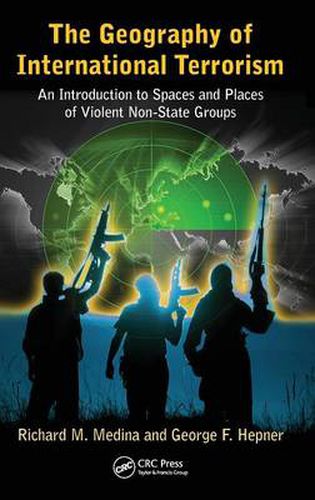Readings Newsletter
Become a Readings Member to make your shopping experience even easier.
Sign in or sign up for free!
You’re not far away from qualifying for FREE standard shipping within Australia
You’ve qualified for FREE standard shipping within Australia
The cart is loading…






While geography is not the only factor to shape human behavior, its influence on terrorists’ motivations, behaviors, options, and activities is a primary consideration in understanding terrorism. Taking a different approach than many other books on terrorism, The Geography of International Terrorism: An Introduction to Spaces and Places of Violent Non-State Groups presents an accessible, cross-disciplinary approach to managing terrorism on a global scale. The authors articulate the role of physical and human geography in terrorist ideology, operations, haven formation, and control.
Providing the wider perspective required for preempting and countering terrorism, the book focuses on the geographic perspective in a more explicit manner than previous treatments of the topic. The authors examine networks as global systems and discuss new geospatial technologies in counterterrorism, supplying a blend of concepts and techniques that support policy development within the governing counter terrorist community.
There are hundreds of books on terrorism, but few if any focus on the influence of geography, geospatial analysis, and geospatial intelligence approaches. A combination of academic theory and practical applications, this book provides the vertical linkage between topics at the high resolution level, such as sense of place and cultural identity of a clan or tribe with regional and global geographic-scale issues critical to understanding 21st century international terrorist groups.
$9.00 standard shipping within Australia
FREE standard shipping within Australia for orders over $100.00
Express & International shipping calculated at checkout
While geography is not the only factor to shape human behavior, its influence on terrorists’ motivations, behaviors, options, and activities is a primary consideration in understanding terrorism. Taking a different approach than many other books on terrorism, The Geography of International Terrorism: An Introduction to Spaces and Places of Violent Non-State Groups presents an accessible, cross-disciplinary approach to managing terrorism on a global scale. The authors articulate the role of physical and human geography in terrorist ideology, operations, haven formation, and control.
Providing the wider perspective required for preempting and countering terrorism, the book focuses on the geographic perspective in a more explicit manner than previous treatments of the topic. The authors examine networks as global systems and discuss new geospatial technologies in counterterrorism, supplying a blend of concepts and techniques that support policy development within the governing counter terrorist community.
There are hundreds of books on terrorism, but few if any focus on the influence of geography, geospatial analysis, and geospatial intelligence approaches. A combination of academic theory and practical applications, this book provides the vertical linkage between topics at the high resolution level, such as sense of place and cultural identity of a clan or tribe with regional and global geographic-scale issues critical to understanding 21st century international terrorist groups.